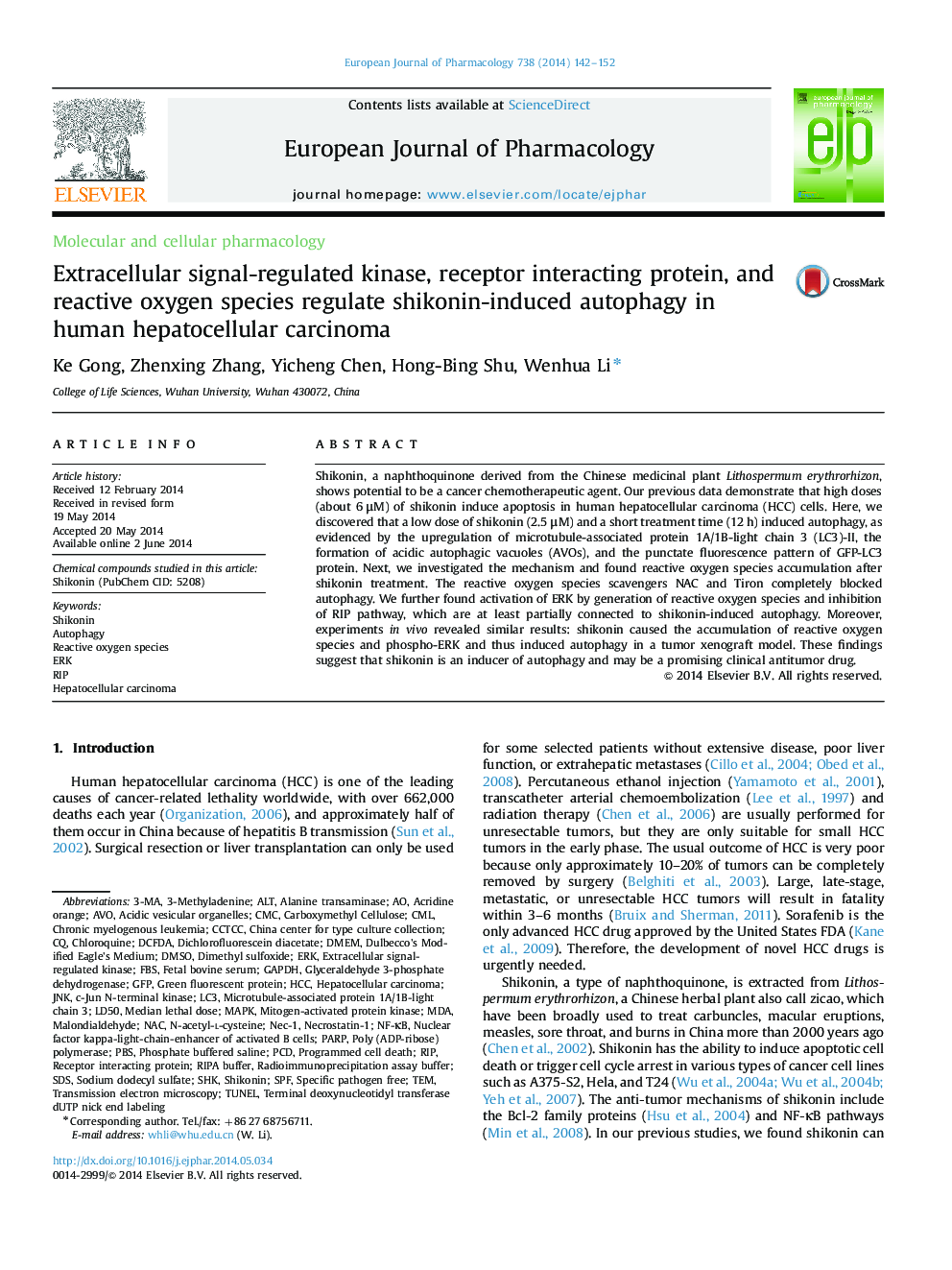| Article ID | Journal | Published Year | Pages | File Type |
|---|---|---|---|---|
| 5827896 | European Journal of Pharmacology | 2014 | 11 Pages |
Shikonin, a naphthoquinone derived from the Chinese medicinal plant Lithospermum erythrorhizon, shows potential to be a cancer chemotherapeutic agent. Our previous data demonstrate that high doses (about 6 μM) of shikonin induce apoptosis in human hepatocellular carcinoma (HCC) cells. Here, we discovered that a low dose of shikonin (2.5 μM) and a short treatment time (12 h) induced autophagy, as evidenced by the upregulation of microtubule-associated protein 1A/1B-light chain 3 (LC3)-II, the formation of acidic autophagic vacuoles (AVOs), and the punctate fluorescence pattern of GFP-LC3 protein. Next, we investigated the mechanism and found reactive oxygen species accumulation after shikonin treatment. The reactive oxygen species scavengers NAC and Tiron completely blocked autophagy. We further found activation of ERK by generation of reactive oxygen species and inhibition of RIP pathway, which are at least partially connected to shikonin-induced autophagy. Moreover, experiments in vivo revealed similar results: shikonin caused the accumulation of reactive oxygen species and phospho-ERK and thus induced autophagy in a tumor xenograft model. These findings suggest that shikonin is an inducer of autophagy and may be a promising clinical antitumor drug.
